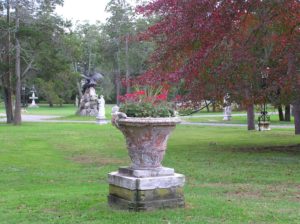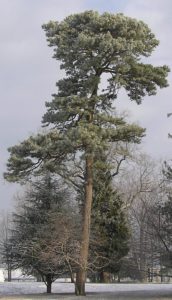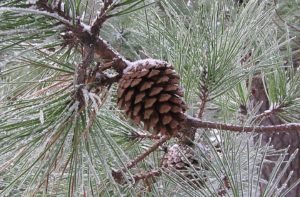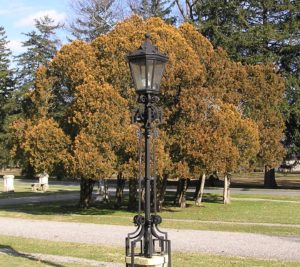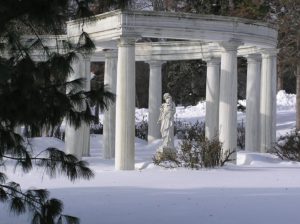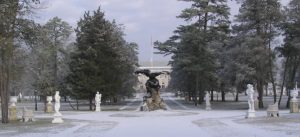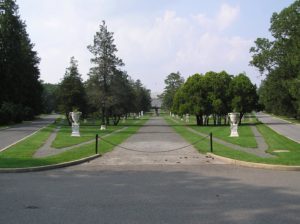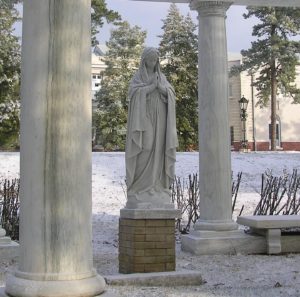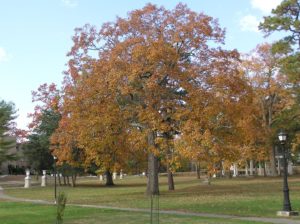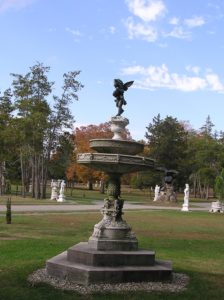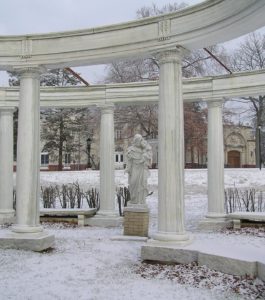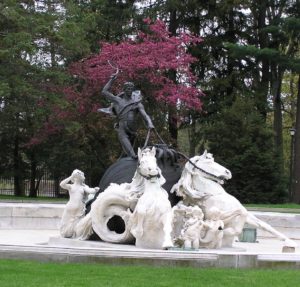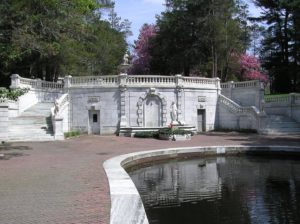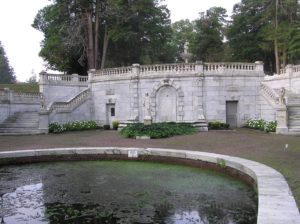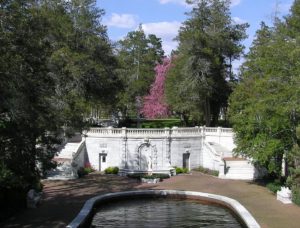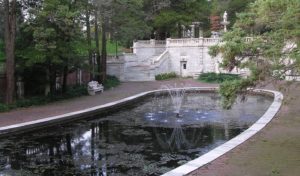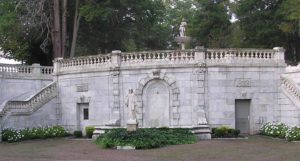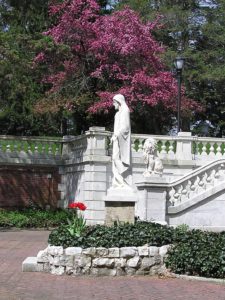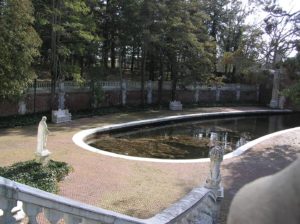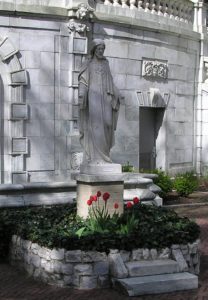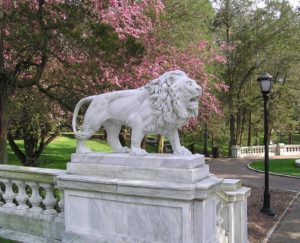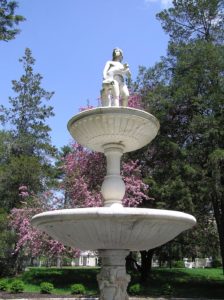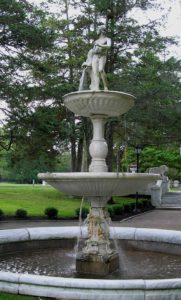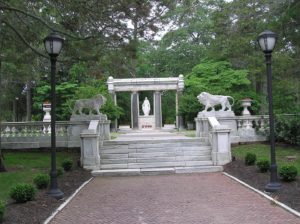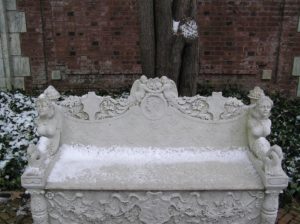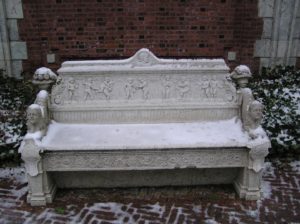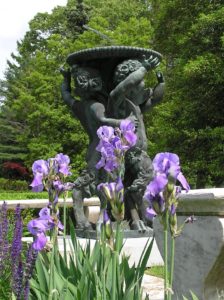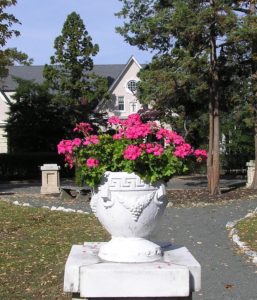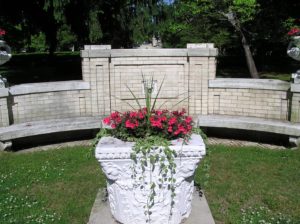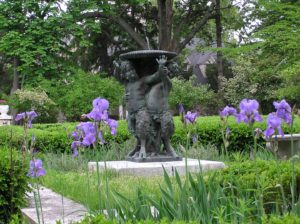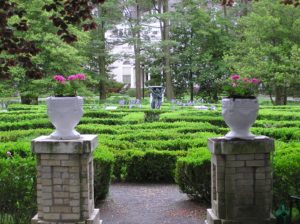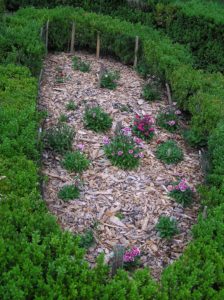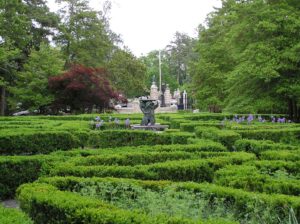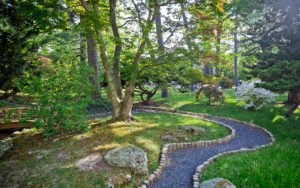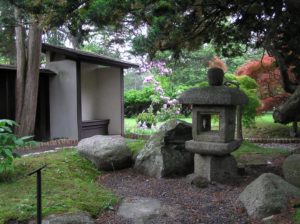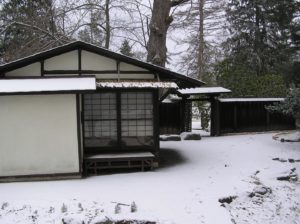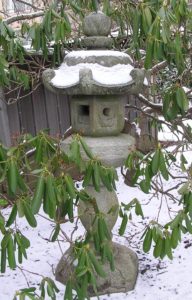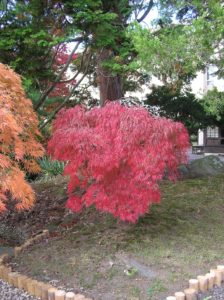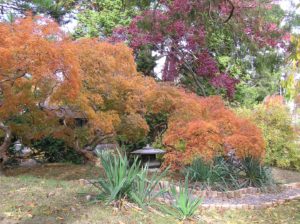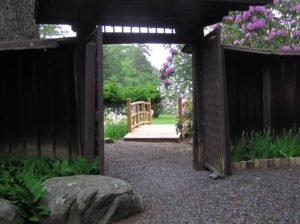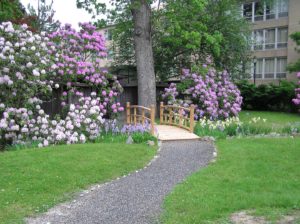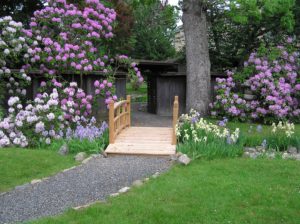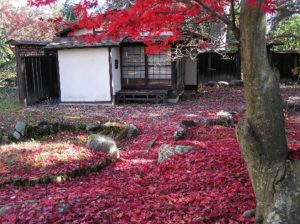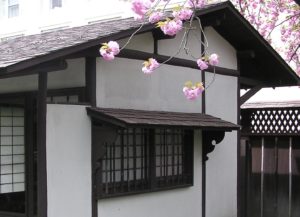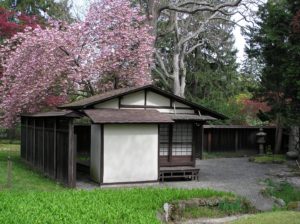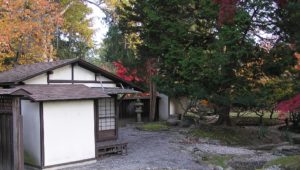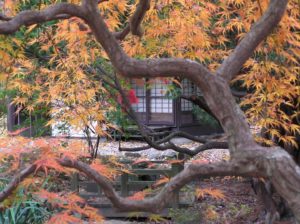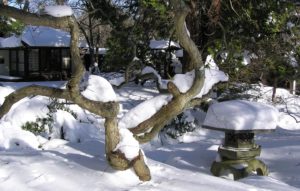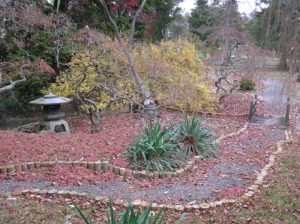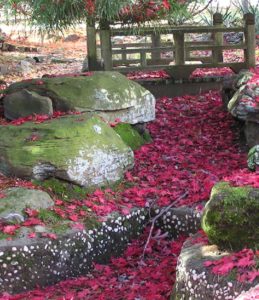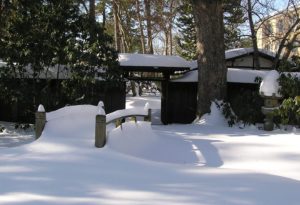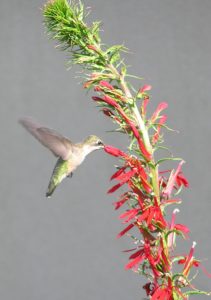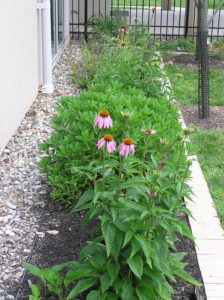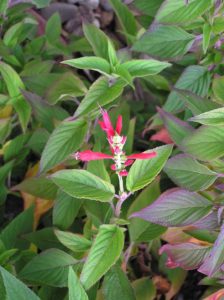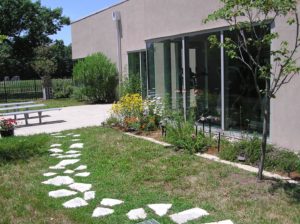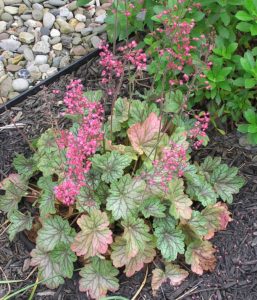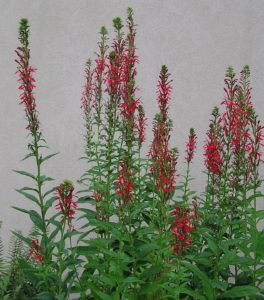Arboretum


The arboretum is open for either 1) free self-guided tours from 8am until dusk daily year-round, no registration required, or 2) free personal guided tours (groups of 5 or more, by prior arrangement with Director Michael Gross). All visitors must enter through the security gate, which is on 9th Street at the only vehicular entrance to the campus/arboretum (we are transitioning between entrances: enter either at 503 9th Street or the intersection of 9th Street and Lakewood Avenue at 900 Lakewood Ave). We are NOT open for visitors on Commencement day, which next year will be Thursday, May 14, 2026.
Watch this site for information about our next Japanese Tea & Culture Experience, which will probably be in early spring 2026. The event takes place in the Mansion and in the Japanese Garden.
Personal photographs for non-commercial and casual/informal purposes are permitted. For information about formal, staged photographs or the professional photography policy, please email the Office of Conferences and Special Events or phone 732-987-2281 or 732-987-2263. Click here for the wedding/wedding photo policy. Pets are not allowed, but trained and certified working service dogs (see https://www.ada.gov/service_animals_2010.htm) are. Buildings, including restrooms, are not open to visitors on self-guided tours. GCU’s entire campus, indoors and outdoors, is both smoke-free and tobacco-free.
Georgian Court University was formerly the winter home of George Jay Gould, millionaire son of railroad tycoon Jay Gould. Prior to European settlement, the Gould property, and all of the rest of New Jersey, was part of the Lenni-Lenape homeland. George Gould purchased 200 acres of land in 1896. He hired the architect Bruce Price to transform it into a lavish country estate resembling an English estate of the Georgian period; therefore, it was named Georgian Court. In addition to designing the buildings, Bruce Price designed three of the four major gardens, which were created before 1910: the Classic or Italian Garden, the Sunken Garden or Lagoon, and the Formal Garden. The garden designer Takeo Shiota designed the Japanese Garden. The Wellness Garden was added in 2008. If, in addition to our 4 historic gardens, you want to see flowering perennials, please visit these smaller gardens: NJ Native Plant Garden, Wellness Garden, Lopez Garden, Chapel Garden, three gardens in front of the library, two gardens around Farley Center walls, and garden along fence across from Mercy Hall. Many of these are marked in our 2 page downloadable brochure.
If you are interested in being informed about GCU-sponsored events open to the public, please email cps@georgian.edu to be added to the mailing list, or visit https://cps.georgian.edu.
Enjoy photos from the historic Dec. 4, 2024, visit of the Hayami-Ryu Grand Tea Master to our tea house and Mansion, two related videos posted at the Sister Maria Cordis Richey Center for the Humanities and Creative Arts, and a composite video of the entire visit.
Arboretum History and Information
The Sisters of Mercy of New Jersey bought the estate in 1924, moving their College of Mount Saint Mary to the site. The college is now Georgian Court University. The entire campus is a National Historic Landmark.
The arboretum, established in 1989, is named after Sister Mary Grace Burns and comprises the landscaped part of the campus (approx. 100 acres). Our collection includes over 2,200 woody plants from over 190 species, representing most of the native species of the New Jersey Pine Barrens (New Jersey Pinelands) as well as a large number of nonnative plant species. We have several species listed as endangered on the IUCN Red List, and several trees that are the largest of their kind in Ocean County. Small Clethra alnifolia, holly and magnolia collections are located between the Italian Gardens and Formal Garden.
Because it is an integral part of the university campus, the arboretum is free, open daily and not marked by signs. We welcome visitors from 8 am until dusk. Please enter the arboretum via the vehicular campus entrance off of 9th Street in Lakewood and tell the security staff you are here to see the arboretum. Please download and print a copy of the two-page arboretum brochure (which also contains a map showing attraction locations) before you come to the campus (copies of this brochure are also available in the brochure holder along the sidewalk to the main entrance of Jeffries Hall at the front of parking lot A). Consider also printing our 16-page, self-guided arboretum walking tour “history and guide” booklet (May 2021 edition), which is designed to be used with the arboretum brochure. Directions and a generic campus map (without arboretum attractions shown) are available by clicking here. For what’s in bloom or colorful, click here. Because we have many deer and the gardens historically featured woody plants, we do not have many annuals or perennials. The four historic gardens — Italian, Formal, Sunken and Japanese — are known for their overall themed designs, elaborate and ornate brickwork and marble, and the integration of historic statuary, sculptures, fountains (most of which are not functional), Japanese teahouse, and woody plants. Many objects are European and were purchased by the Gould family. Our campus has been described as “an art museum in an arboretum.”
The arboretum is a member of the American Public Gardens Association, Garden State Gardens Consortium, and North American Japanese Garden Association. We participate in APGA’s Plant Protection Program. Our collection is included in the database maintained by Botanic Gardens Conservation International and we participate in BGCI conservation programs. We are also a cooperator in the Plant Conservation Alliance. View our sustainable gardening practices posted by the Sustainable Gardening Institute. We have Level II accreditation from the ArbNet Arboretum Accreditation Program.
Nearly ninety species of birds have been recorded on our campus. We have been home for a nesting pair of bald eagles since spring of 2021.
We welcome your tax-deductible financial contributions. To give to the arboretum, use this link: https://alumni.georgian.edu/giving. Thank you for your support!
Our Mission Statement: The Sister Mary Grace Burns Arboretum of Georgian Court University, acting in harmony and interdependence with all creation through sustainable landscaping practices, has the mission of preserving and enhancing the unique botanical heritage of the former Georgian Court estate and the historic landscape elements of its gardens, while promoting its use for education, research, enjoyment and inspiration. Species added to the four historic gardens augment the gardens’ authenticity. The New Jersey Pinelands flora is maintained and expanded. Additions to the arboretum include species that provide interesting colors, textures and fragrances throughout the year. Collections are developed that build upon the botanical strengths of the grounds and are integrated with the historic statues, sculptures, fountains, and other elements that give the landscape its unique character
Italian Garden
Click on image for larger picture
The Italian Garden was inspired by the famous formal gardens of Italy. It features an enormous Fountain of Apollo sculpted by John Massey Rhind (and turned on only for special events), a wrought iron eagle and dragon sculpture commissioned by Emperor Wilhelm II and forged by the Armbruster Brothers of Frankfurt for the German pavilion of the Paris Exposition of 1900, life-size statues of Greek gods and goddesses, floral urns mounted on marble pedestals, centuries-old fountains (non-functioning, including one boasting a replica of Andrea del Verrocchio’s Putto with Dolphin, which was sculpted in the late 1400s for the Medici Villa at Careggi), and two semicircular pergolas with Tuscan columns, marble benches and statuary. Most of the trees in the Italian Garden are conifers, and include Himalayan Pine (Pinus wallichiana), White Pine (Pinus strobus), Pitch Pine (Pinus rigida), Shortleaf Pine (Pinus echinata), Colorado Blue Spruce (Picea pungens), American Arborvitae (Thuja occidentalis), Oriental Arborvitae (Platycladus orientalis), Eastern Redcedar (Juniperus virginiana), Chinese Juniper (Juniperus chinensis), Eastern Hemlock (Tsuga canadensis), Hinoki Falsecypress (Chamaecyparis obtusa) and Moss (Sawara) Cypress (Chamaecyparis pisifera). The first trees of Italian origin were added to the garden in 1999-2000: Italian Cypress (Cupressus sempervirens). At the north end of the Italian Gardens is the Casino, of which the doors above the southeast entrance feature a large sculpture that is a replica of Henri Regnault’s famous 1868 painting of Automedon with the Horses of Achilles. The doors above the southwest entrance to the Casino feature another large sculpture of a charioteer and four horses. Both of these were created by the famous Italian sculptor Geremia Grandelis.
Peak color in the Italian Garden is from May 15–Sept. 30, when the geraniums in the urns are in flower.
Sunken Garden
Click on image for larger picture
This garden, with its lagoon connecting it to Lake Carasaljo, is the most lavish of the three gardens designed by Bruce Price. It features a 17th century marble fountain from a garden in southern France (turned on only for special occasions) on a brick esplanade, a double marble staircase flanked by lions, and carved marble benches, which are copies of benches in the Vatican Garden. The lagoon itself connects to Lake Carasaljo under a bridge also designed by Bruce Price. The bridge was restored in 1999. Water from the lagoon feeds the Apollo Fountain in the Italian Garden. Moss (Sawara) Cypress (Chamaecyparis pisifera) is common in this garden, but Eastern Redbud (Cercis canadensis), flanks the bridge at the southern end of the garden. The lagoon contains water lilies.
The sunken garden is most colorful between about April 10 and May 20, when the eastern redbud is in flower, along with the crabapples on either side of the sunken garden. The crapemyrtles behind the 17th century fountain generally flower between July 15 and August 15. Large plantings of October daisies are in bloom in October at the base of the twin marble staircases.
Formal Garden
Click on image for larger picture
This is an elliptical flower garden, planted with mathematical precision. Maze-like walks and boxwood hedge borders add to the precise layout. In the center of the garden is a bronze sculpture of three satyrs holding a sundial. The sculpture of the satyrs is a replica of part of a pair of identical fountains cast in 1670 by Pierre LeGros and found in the Gardens of the Palace of Versailles along the Allee d’Eau between the Dragon Fountain and the Bath of the Nymphs of Diana. Ringing the formal garden are American Holly (Ilex opaca), White Pine (Pinus strobus), Norway Spruce (Picea abies ), Moss (Sawara) Cypress (Chamaecyparis pisifera), Ashleaf Maple (Acer negundo), Japanese Apricot (Prunus mume), Common Horsechestnut (Aesculus hippocastanum), Sapphireberry (Symplocos paniculata), Mountain Laurel (Kalmia latifolia) and White Ash (Fraxinus americana).
The formal garden offers an array of colors from May 15-October 1. The early-flowering peonies around the garden and irises around the central sundial are at their peak around Memorial Day. Russian sage flowers around the sundial from June through September. The 15 small flowerbeds among the boxwood hedges contain lavender, which is in bloom from May through July.
After visiting the formal garden, go around the back of the mansion to see the many large pine trees and the two life-size bronze falconer sculptures made by Eugene A. Lansere in 1876 and 1878.
Japanese Garden
Click on image for larger picture
A birthday gift to Edith Gould from her husband George, this Takeo Shiota-designed garden is entered through a gateway, or machiai. The garden path, or roji, passes a genuine teahouse (from the Japan-British exhibition of 1910), or sukiya, and leads to a small wooden footbridge as it continues to the back of the garden. A stately Umbrella Pine (Sciadopitys verticillata) on the island in the center of the garden, is surrounded by Japanese Yew (Taxus cuspidata), Japanese Cherry (Prunus serrulata), Hinoki Falsecypress (Chamaecyparis obtusa) and Japanese Maple (Acer palmatum).Weeping Higan Cherry (Prunus subhirtella) is also in the garden.
The garden features three custom-designed wooden bridges built by Peter Wechsler in 2014-2015 and several cultivars of Japanese maples added in 2013 to replace trees lost in Superstorm Sandy. Mr. Wechsler replaced the shoji, installed tatami mats, and made other teahouse improvements from 2016-present.
There are two periods of peak color in the Japanese Garden. One is from April 15-June 5. The early flowers of the cherries are followed by lily of the valley, azalea, iris, rhododendron, and goldenchain tree. Often, the irises, rhododendron, and goldenchain tree flower simultaneously in the last half of May, creating a spectacular mix of yellow, purple, and pink at the entrance to the garden. The other peak color period is about October 25-Nov 10, when the leaves of the cherries and various cultivars of maples change to yellow, red and orange.
The garden is surrounded by a deer fence with an entrance gate located on the stone path leading to the garden. The garden is open from 7am to dusk daily.
Each year, we participate in the North American Japanese Garden Association’s Gardens for Peace initiative.
Check here for information about our next annual Japanese Tea & Culture Experience, which will probably be in early spring 2026. The event takes place in the Mansion and in the Japanese Garden.
Enjoy photos from the historic Dec. 4, 2024, visit of the Hayami-Ryu Grand Tea Master to our tea house and Mansion, two related videos posted at the Sister Maria Cordis Richey Center for the Humanities and Creative Arts, and a composite video of the entire visit.
Wellness Garden
Click on image for larger picture
In 2008, the Wellness Center/University Store/Athletic Field complex just west of the Arts and Science Center and north of the Library was built. As part of this project, a Wellness Center Garden, designed by biology department students, was installed in summer 2009 and features plants that were historically used for medicinal or herbal purposes. Enclosed by a fence to keep out deer, the garden includes about 70 species, including sweetgrass, stinging nettle, wild strawberry, thyme, rosemary, mint, coneflower (Echinacea), cranberry, cardinal flower, pussytoes, joe pye-weed, yucca, chicory, ferns, bayberry, and prickly pear cactus. Enter the garden by lifting the metallic latch (see directions on fence). The front of the Wellness Center itself has a “living roof” planted with sedums and other drought, heat and high-light tolerant species. As part of the sustainability/wellness initiative, a trellis of the native vine Trumpet Creeper (Campsis radicans) provides summer shade and transmits winter’s light to the east-facing classroom at the front of the Wellness Center. Trees around the Wellness Center include many native species, including Black Gum (Nyssa sylvatica), Eastern Redbud (Cercis canadensis), Serviceberry (Amelanchier), Red Oak (Quercus rubra), Scarlet Oak (Quercus coccinea), and Wild Black Cherry (Prunus serotina). Non-native Sargent Cherry (Prunus sargentii) trees provide early spring flowers. There is a small native grass and sedge garden in front of the Wellness Center to showcase deer-resistant, drought-tolerant, low-maintenance species. Between The Cafe/Gavan Lounge and Jeffries Hall is a New Jersey native plant garden, created in 2019. Around the corner, in front of the library arcade, is another small garden, created in 2021.
What's in Bloom
Jun 29-Jul 5, 2025:
Fragrance and Color:
- Yellow, blue, green foliage of our many conifers throughout our campus
- Red and pink geraniums in urns — Formal Garden, Italian Gardens, entrance to Sunken Garden
- Roses — Sister Maria’s Rose Garden, Puny Garden, McAuley Heritage Center north and west sides
- Colorful perennials — library gardens, pollinator gardens around Farley and Mercedes, Wellness Gardens, Formal Garden
- Lavender — Formal Garden beds, west side of McAuley, front of Mercedes, most small fenced gardens
- White fragrant flowers of magnolias — near entrance to Sunken Garden, south of Raymond Hall, east of Marron Chapel
- White flowers of Stewartia — south of Mercedes entrance
- Yellow flowers of Golden Raintree — along road between Jeffries Hall and Farley Center

